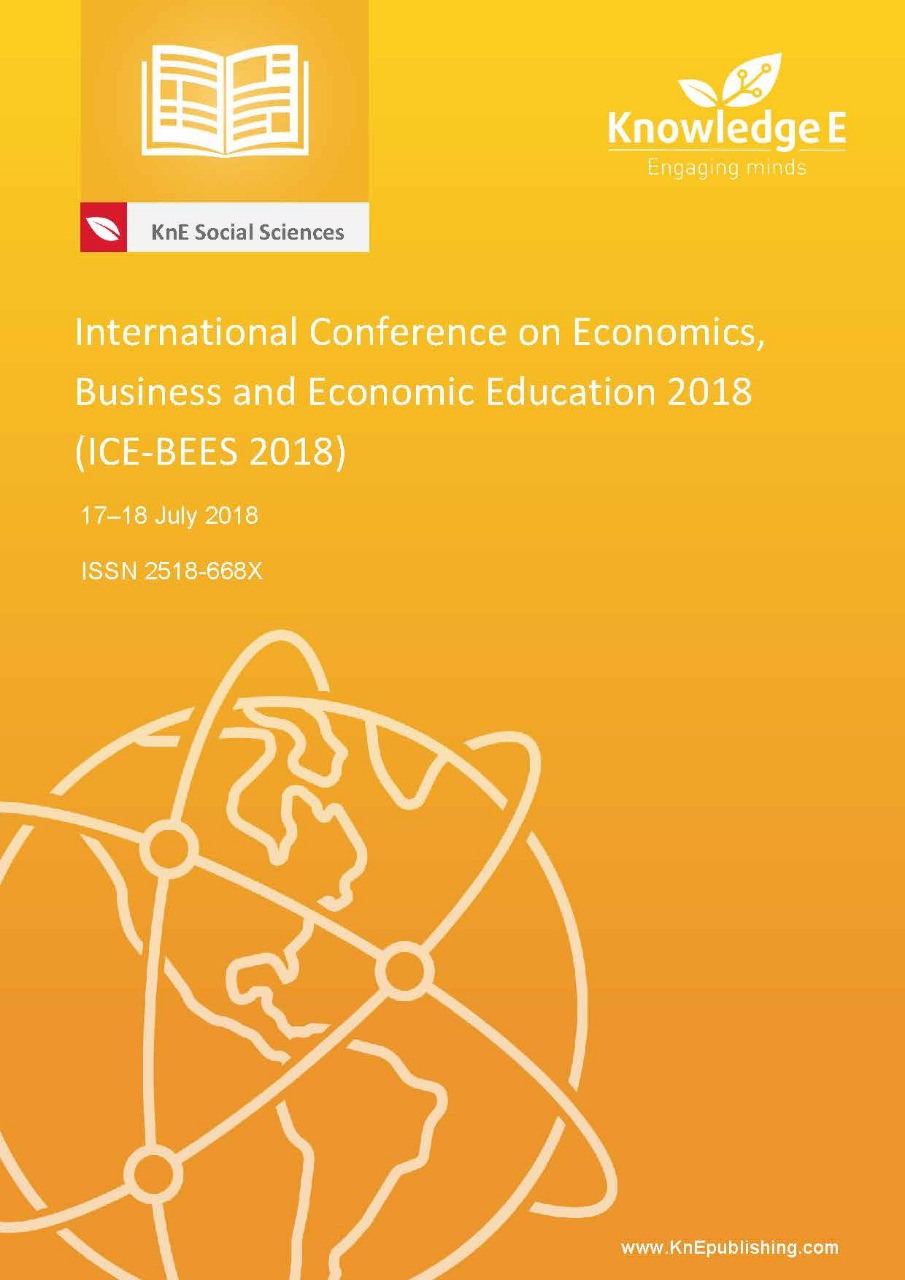What’s Wrong with SISDALSKRIPSI? An Evaluation of the Thesis Control System at UNNES
DOI:
https://doi.org/10.18502/kss.v3i10.3149Abstract
This study aims to examine the implementation of thesis control system (SISDALSKRIPSI) at the Faculty of Economics, Universitas Negeri Semarang (FE UNNES). The concept of Unified Theory of Acceptance and Use of Technology (UTAUT) is used to understand the factors that influence the students want to use SISDALSKRIPSI in FE UNNES. The research design is evaluative research. The population of the research is the students of the Department of Economic Education, FE UNNES who are preparing the thesis. Respondents in this study are also lecturers and supervisors at FE UNNES. The questionnaires and interviews were used to collect the data. Data analysis techniques used are multiple regression analysis and focus group discussion. The results showed that effort expectancy, performance expectancy, and social influence have positive and significant impact on intention to use SISDALSKRIPSI. Intension and facilitating condition also proved to have positive and significant effect on the actual use of SISDALSKRIPSI. Other results indicate that SISDALSKRIPSI still have to be improved. So it will be easier to use by lecturers and students.
Keywords: on time graduation; SISDALSKRIPSI; thesis control system; UTAUT
References
Al-Suqri, M. N. (2014). Perceived usefulness, perceived ease-of-use and faculty acceptance of electronic books. Library Review, 63(4/5), 276–294. http://doi.org/ 10.1108/LR-05-2013-0062
Awwad, M. S., & Al-Majali, S. M. (2015). Electronic library services acceptance and use: An empirical validation of unified theory of acceptance and use of technology. The Electronic Library, 33(6), 1100–1120. http://doi.org/10.1108/EL-03-2014-0057
Chang, C.-C. (2013). Library mobile applications in university libraries. Library Hi Tech, 31(3), 478–492. http://doi.org/10.1108/LHT-03-2013-0024
Hsiao, C.-H., & Tang, K.-Y. (2014). Explaining undergraduates’ behavior intention of e-textbook adoption; empirical assessment of five theoritical models. Library Hi Tech, 32(1), 139–163. http://doi.org/http://dx.doi.org/10.1108/LHT-09-2013-0126
Hsu, C.-L., Lin, Y.-H., Chen, M.-C., Chang, K.-C., & Hsieh, A.-Y. (2017). Investigating the determinants of e-book adoption. Program, 51(1), 2–16. http://doi.org/10.1108/ PROG-04-2014-0022
Isaias, P., Reis, F., Coutinho, C., & Lencastre, J. A. (2017). Empathic technologies for distance/mobile learning: An empirical research based on the unified theory of acceptance and use of technology (UTAUT). Interactive Technology and Smart Education, 14(2), 159–180. http://doi.org/10.1108/ITSE-02-2017-0014
Kardoyo, Nurkhin, A., & Arief, S. (2015). the Determinants of Student’s Intention To Use Mobile Learning. PEOPLE: International Journal of Social Sciences, Special Is, 102–117.
Khan, A., Masrek, M. N., Mahmood, K., & Qutab, S. (2017). Factors influencing the adoption of digital reference services among the university librarians in Pakistan. The Electronic Library, 35(6), 1225–1246. http://doi.org/10.1108/EL-05-2016-0112
Lwoga, E. T., & Questier, F. (2014). Faculty adoption and usage behaviour of open access scholarly communication in health science universities. New Library World, 115(3/4), 116–139. http://doi.org/10.1108/NLW-01-2014-0006
Maldonado, U. P. T., Khan, G. F., Moon, J., & Rho, J. J. (2011). E-learning motivation and educational portal acceptance in developing countries. Online Information Review, 35(1), 66–85. http://doi.org/10.1108/14684521111113597
Muhsin, Thomas, P., & Nurkhin, A. (2016). Intention to use E-Journal; A Unified Theory of Acceptance and use of Technology Perspective. IOSR Journal of Research & Method in Education (IOSR-JRME), 6(4), 100–106. http://doi.org/10.9790/7388- 060404100106
Pramusinto, H., Murniawaty, I., & Bowo, P. A. (2017). Evaluasi Program On Time Graduation Jurusan Pendidikan Ekonomi Universitas Negeri Semarang. Jurnal Promosi, 5(2), 27–33.
Singeh, F. W., Abrizah, A., & Karim, N. H. A. (2013). Malaysian authors’ acceptance to self-archive in institutional repositories. The Electronic Library, 31(2), 188–207. http://doi.org/10.1108/02640471311312375
Tarhini, A., Masa’deh, R., Al-Busaidi, K. A., Mohammed, A. B., & Maqableh, M. (2017). Factors influencing students’ adoption of e-learning: a structural equation modeling approach. Journal of International Education in Business, 10(2), 164–182. http://doi. org/10.1108/JIEB-09-2016-0032
Venkatesh, V., Morris, M. G., Davis, G. B., & Davis, F. D. (2003). User acceptance of information technology: Toward a unified view. MIS Quarterly, 27(3), 425–478. http://doi.org/10.2307/30036540
Williams, M. D., Rana, N. P., & Dwivedi, Y. K. (2015). The unified theory of acceptance and use of technology (UTAUT): a literature review. Journal of Enterprise Information Management, 28(3), 443–488. http://doi.org/10.1108/JEIM-09-2014- 0088
Wong, K., Russo, S., & McDowall, J. (2012). Understanding early childhood student teachers’ acceptance and use of interactive whiteboard. Campus-Wide Information Systems, 30(1), 4–16. http://doi.org/10.1108/10650741311288788
Yuvaraj, M. (2016). Adoption of technology in recruitment of library professionals and faculty members. The Bottom Line, 29(4), 241–250. http://doi.org/10.1108/BL03-2016 0016

